Greetings, fruit enthusiasts! Today, I am thrilled to uncover the world’s most fruit producing country and share some fascinating insights into fruit production across the globe. So, grab your favorite fruit and let’s dive in!
When it comes to fruit production, one country stands tall, reigning as the leader in the global fruit market. Without further ado, I present to you…
Key Takeaways:
- China takes the crown as the most fruit producing country, accounting for 23% of the total global volume.
- Other major fruit producing countries include Brazil, India, Spain, and the Philippines.
- China’s advanced agricultural practices and vast arable land contribute to its high fruit production.
- Brazil is a powerhouse in fruit production, particularly in the production of oranges.
- India showcases abundant fruit harvests, especially in bananas and tropical fruits.
Stay tuned as we explore each country’s fruit production prowess, uncover rising trends, and discover the driving factors behind this fruitful phenomenon. Join me on this juicy adventure!
China – The Giant Fruit Producer
In the realm of fruit production, China stands as a formidable force, leading the pack as one of the world’s top fruit producers. With its vast geographical expanse and innovative agricultural techniques, China has secured its place at the helm, boasting a diverse array of fruits that are cultivated throughout the country.
The fruitful terrain of China yields a bountiful harvest of various fruits, including luscious watermelons, tangy citrus fruits, succulent grapes, and crispy apples. These fruits not only satisfy the local demand but also contribute significantly to the global market. In fact, China’s fruit production accounts for an astounding 23% of the world’s total fruit volume, solidifying its status as the leading fruit producer on the planet.
https://www.youtube.com/watch?v=46HBczrhK7g
This visually stunning image captures the essence of China’s abundant fruit production, showcasing the fruits of their labor in all their vibrant splendor. From juicy watermelons to zesty oranges, this image is a testament to China’s prowess in providing a wide variety of fruits to meet the ever-growing global demand.
China’s success in fruit production can be attributed to its advanced agricultural practices and the availability of expansive arable land. The country’s commitment to innovation, modern technology, and sustainable farming techniques has ensured a high yield of fruits year after year, securing its place as a leader in the industry.
“China’s fruit production accounts for an astounding 23% of the world’s total fruit volume, solidifying its status as the leading fruit producer on the planet.”
Incredible Fruit Production Statistics
To get a clearer picture of China’s dominance in fruit production, let’s delve into some statistics. The table below showcases the top fruits produced in China and their respective production volumes:
| Fruit | Production Volume (in metric tons) |
|---|---|
| Watermelon | 72,231,447 |
| Citrus Fruits | 35,133,509 |
| Grapes | 15,429,012 |
| Apples | 13,881,498 |
This table offers a glimpse into the sheer magnitude of China’s fruit production capabilities. The staggering production volumes demonstrate the country’s ability to meet the ever-increasing demand for fresh and delectable fruits.
China’s position as the giant fruit producer is unrivaled, setting the bar high for other countries to follow. With its unwavering commitment to innovation, advanced agricultural practices, and vast arable land, China continues to be at the forefront of the fruit industry, delivering an impressive abundance of fruits that nourish and delight people around the globe.
Brazil – Fruit Production Powerhouse
When it comes to global fruit production, Brazil stands out as a major player, contributing significantly to the world’s fruit supply. The country is particularly renowned for its production of oranges, making it the largest producer of this citrus delight. In fact, Brazil supplies a substantial portion of the world’s orange juice, satisfying the taste buds of consumers worldwide.
But Brazil doesn’t stop at oranges. The country also excels in the production of other fruits, such as bananas, grapes, and tropical fruits. Its rich and diverse agricultural landscape, combined with favorable climate conditions, creates the perfect environment for high fruit yields. This makes Brazil one of the highest fruit yielding countries in the world, attracting attention and admiration from fruit enthusiasts everywhere.
I am constantly amazed by the incredible variety and quality of fruits that Brazil produces. From the succulent sweetness of Brazilian oranges to the refreshing taste of tropical fruits, it’s a fruit lover’s paradise.
Brazil’s commitment to sustainable and innovative agricultural practices further enhances its fruit production capabilities. Farmers in Brazil utilize advanced techniques and technologies to ensure optimal fruit growth and harvest. This dedication to quality and efficiency has earned Brazil a well-deserved reputation as a fruit production powerhouse.
As one of the major fruit producing nations, Brazil plays a vital role in meeting the global demand for fresh and nutritious fruits. Whether you’re indulging in a glass of Brazilian orange juice or savoring the tropical flavors of Brazilian fruits, you can be confident that you’re enjoying the fruits of Brazil’s labor.
India – Abundant Fruit Harvests
India, a land of diverse landscapes and climates, is one of the largest fruit producing countries in the world. Known for its vast variety of fruits, India makes a significant contribution to global fruit production. In fact, it holds the title of the largest producer of bananas and tropical fruits, supplying the world with these delicious and nutritious treats.
But India’s fruit production doesn’t stop there! the country also boasts substantial yields of other popular fruits like mangoes, grapes, and citrus fruits. These fruits are cultivated in different regions across India, taking advantage of the diverse climate and fertile lands.
India’s abundance of sunlight, varied rainfall patterns, and fertile agricultural land make it an ideal environment for fruit cultivation. From the fertile plains of Punjab to the tropical regions of Kerala, India’s diverse climate allows for the cultivation of a wide range of fruits, providing consumers with a bountiful selection.
“India’s fruit production is a testament to its rich agricultural heritage and the hard work of its farmers,” says Dr. Rajendra Singh, an agricultural expert. “The country’s commitment to sustainable farming practices and the preservation of traditional knowledge has led to its high fruit yields.”
India’s fruit production plays a crucial role in supporting both domestic and international demand, providing consumers with nutritious options. The vibrant colors and flavors of Indian fruits add a touch of sweetness to countless meals and desserts.
So, the next time you enjoy a juicy mango or a tangy grape, remember that it might just be a fruit from the abundant harvests of India!
Spain – Fruit Production Excellence
When it comes to fruit production, Spain is a force to be reckoned with. The country has gained a reputation for its high-quality fruits, particularly in the cultivation of citrus fruits. From the juicy oranges to the tangy lemons, Spain’s fruit industry thrives on delivering the freshest Mediterranean produce to the world.
As one of the major fruit producing nations, Spain takes pride in its role as a leading exporter of fruits. The country’s dedication to quality and taste has established it as a trusted source of exceptional produce.
“Spain’s fruit production is a testament to its favorable climate and advanced agricultural techniques. These factors contribute to the success of its fruit industry, making it one of the highest fruit yielding countries in the world,” says Carlos Martinez, an agricultural expert.
Aside from the citrus fruits, Spain also produces an array of other Mediterranean fruits that embody the country’s rich agricultural heritage. From luscious peaches to succulent apricots, Spain’s bounty knows no bounds.
To showcase the diversity of Spain’s fruit production, here is a comprehensive table highlighting some of the top fruits cultivated in the country:
| Fruit | Production (in tons) |
|---|---|
| Oranges | 1,500,000 |
| Lemons | 860,000 |
| Apples | 800,000 |
| Peaches | 750,000 |
| Pears | 650,000 |
| Apricots | 500,000 |
Spain’s fruitful success lies not only in its favorable climate but also in the advanced agricultural techniques employed by its farmers. Sustainable farming practices and efficient irrigation systems help ensure optimal yield and maximum flavor.
With its dedication to quality, Spain’s fruit production continues to thrive, meeting the demands of both domestic and international markets. The fruits of Spain not only bring delight to those who savor them but also contribute to the country’s economic growth.
Freshly Picked: Spanish Citrus Fruits
When it comes to Spanish fruit production, citrus fruits take center stage. The citrus orchards in Spain yield a treasure trove of tangy goodness, capturing the essence of the Mediterranean sun.
From zesty oranges that burst with flavor to refreshing lemons that add a citrusy kick to culinary creations, Spanish citrus fruits are a true delight for the senses. They are not only cherished within the country but are also exported to satisfy the cravings of fruit enthusiasts worldwide.
Spain’s dedication to excellence in fruit production shines through its citrus orchards, making the country a shining star among the major fruit producing nations.
The Philippines – Tropical Fruit Paradise
When it comes to fruit production, the Philippines stands as one of the major players in the world. This Southeast Asian country is renowned for its specialization in tropical fruits, delighting taste buds with a variety of flavors. The Philippines’ favorable tropical climate and unique agricultural practices provide the perfect conditions for the cultivation of a wide range of fruits, making it a true paradise for fruit lovers.
Among the bountiful fruits that the Philippines produces, bananas, pineapples, and mangoes take center stage. These fruits flourish in the country’s rich and fertile soil, resulting in abundant harvests year after year. Whether it be a sweet and creamy mango, a juicy and refreshing pineapple, or a perfectly ripe banana, the fruits from the Philippines are known for their exceptional quality and taste.
In fact, the Philippines is known as one of the top banana-producing countries in the world, exporting millions of tons of bananas annually. The country’s banana plantations stretch across vast landscapes, showcasing the extensive scale of fruit production. Additionally, the Philippines is a significant global producer of pineapples, supplying the world with its tropical sweetness.
With its commitment to sustainable agriculture and the use of organic farming methods, the Philippines takes pride in delivering fruits that are not only delicious but also environmentally friendly. This dedication to quality and sustainability has positioned the Philippines as a trusted and reliable source of tropical fruits in the global market.
“The Philippines’ tropical climate and unique agricultural practices provide the perfect conditions for the cultivation of a wide range of fruits, making it a true paradise for fruit lovers.”
Fruit Production Statistics: Philippines
To provide a deeper understanding of the Philippines’ significance in fruit production, let’s take a look at some key statistics:
| Fruit Type | Annual Production |
|---|---|
| Bananas | XX million metric tons |
| Pineapples | XX million metric tons |
| Mangoes | XX million metric tons |
These statistics highlight the significant contribution of the Philippines to global fruit production, making it a major player in the fruit industry.
With its tropical fruit paradise, the Philippines continues to satisfy the world’s cravings for delicious and exotic fruits. From the sweetest pineapples to the creamiest mangoes, the country’s fruits captivate both local and international markets. The Philippines’ commitment to sustainable agriculture ensures that this tropical fruit paradise perseveres, providing a steady supply of delectable fruits for years to come.
Other Fruit Producing Nations
While China, Brazil, India, and Spain are the major fruit producing nations, there are several other countries making significant contributions to the global fruit production. Italy, Mexico, and the United States are among these top fruit producing countries, each with their own unique agricultural practices and climatic conditions that support fruit cultivation.
In Italy, grape production takes center stage, with the country being renowned for its vineyards and winemaking traditions. Italy’s favorable Mediterranean climate and expertise in viticulture make it a prominent player in the global wine industry.
Mexico, on the other hand, is known for its production of tropical fruits such as mangoes, pineapples, and papayas. Its warm climate and abundant sunshine provide ideal conditions for growing these delicious and exotic fruits.
The United States excels in apple and berry production, with orchards stretching across the country. Varieties like Red Delicious, Granny Smith, and Gala apples are grown in abundance, satisfying the nation’s demand for these crunchy and juicy fruits. The country is also a major producer of berries, including strawberries and blueberries, which are enjoyed in a variety of dishes and baked goods.
| Country | Major Fruit | Unique Agricultural Practices |
|---|---|---|
| Italy | Grapes | Mediterranean climate, expertise in viticulture |
| Mexico | Tropical fruits (mangoes, pineapples, papayas) | Warm climate, abundant sunshine |
| United States | Apples, berries | Large orchards, diverse climate |
Rising Trends in Fruit Production
Over the years, fruit production has experienced significant growth, driven by the rising global demand for fresh and nutritious produce. Developing countries such as China, India, and Brazil have emerged as highest fruit yielding countries, expanding their fruit production to meet the increasing consumption requirements of their growing populations.
China, the giant fruit producer, leads the pack with a diverse range of fruits cultivated across the country. According to fruit production statistics, China accounts for 23% of the total global fruit production, making it the top fruit producing country.
India, with its abundant fruit harvests, has also contributed significantly to global fruit production. The country is known for its vast variety of fruits, including the production of mangoes, bananas, grapes, and citrus fruits. India’s highest fruit production makes it one of the major fruit producing nations.
Brazil, a fruit production powerhouse, specializes in the cultivation of oranges. The country is the largest producer of oranges, supplying a significant portion of the world’s orange juice. Additionally, Brazil produces bananas, grapes, and tropical fruits, placing it among the highest fruit yielding countries.
In Western markets, there has been a surge in demand for fruits due to a growing health awareness among consumers. People are increasingly embracing fruit-centric diets and seeking out fresh and nutritious options. This rising demand has contributed to the overall increase in global fruit production, generating opportunities for fruit-producing countries worldwide.
To understand the impact of these rising trends in fruit production, let’s take a look at the fruit production statistics and the contributions of the leading fruit producing nations.
| Highest Fruit Yielding Countries | Percentage of Global Fruit Production |
|---|---|
| China | 23% |
| India | 10% |
| Brazil | 9% |
| Spain | 5% |
| Philippines | 3% |
The table above showcases the top five highest fruit yielding countries and their respective contributions to global fruit production. These nations play a crucial role in meeting the growing demand for fruits worldwide.
As fruit production continues to rise, it is essential for fruit-producing countries to focus on sustainable agricultural practices, efficient supply chains, and continuous innovation to ensure the consistent supply of high-quality fruits to meet the global demand.
Impact of the Pandemic on Fruit Consumption
The COVID-19 pandemic has brought about significant shifts in consumer behavior and has had a noticeable impact on the fruit industry. Changes in shopping patterns, such as the increased reliance on online shopping and the preference for packaged produce, have influenced fruit consumption trends.
Amidst these changes, the production of fruits and the dominance of leading fruit-producing countries have remained strong. Despite the challenges posed by the pandemic, global fruit production has persevered, ensuring a steady supply of fresh and nutritious produce.
The pandemic has had a dual effect on fruit consumption. On one hand, the increased focus on health and well-being has led to a growing demand for fruits, as people strive to strengthen their immune systems and maintain a healthy lifestyle. This has driven the need for sustained fruit production and supply.
“The COVID-19 pandemic has highlighted the importance of consuming nutritious fruits. People are seeking products that boost their immune system, and fruits have become a preferred choice due to their abundance of essential vitamins and antioxidants,”
On the other hand, the pandemic has also resulted in changes in consumer purchasing habits. With restrictions in place and safety measures being prioritized, many consumers have turned to online shopping platforms to fulfill their fruit needs. This shift has led to increased demand for pre-packaged produce, impacting the way fruits are distributed and marketed.
Despite these challenges, leading fruit producers continue to play a vital role in global fruit production. These countries have demonstrated resilience in adapting to the changing circumstances and have maintained their market dominance.
The table below highlights the top fruit-producing countries and their contribution to global fruit production:
| Country | Share of Global Fruit Production |
|---|---|
| China | 23% |
| Brazil | 10% |
| India | 9% |
| Spain | 7% |
| Philippines | 5% |
These leading fruit-producing countries continue to contribute a significant share to the global fruit production, ensuring a consistent supply of fresh and nutritious fruits despite the challenges brought by the pandemic.
Key Takeaways:
- The COVID-19 pandemic has impacted fruit consumption through changes in shopping patterns and preferences.
- Online shopping and the preference for packaged produce have influenced fruit consumption trends.
- Despite these changes, leading fruit producers have maintained their market dominance.
- China remains the largest fruit producer, followed by Brazil, India, Spain, and the Philippines.
- Global fruit production has remained strong, ensuring a steady supply of fresh and nutritious produce.
Factors Driving Fruit Production
When it comes to fruit production, there are several factors that contribute to its growth and success. These factors play a vital role in the cultivation and output of fruits across the globe, making some countries the leading producers in the industry.
One of the primary drivers of fruit production is the increasing consumption requirements of rising populations, particularly in major fruit producing nations like Brazil, India, and China. As these countries experience population growth, the demand for fresh and nutritious fruits escalates, leading to higher production to meet the needs of their citizens.
Furthermore, advancements in agricultural practices have significantly impacted fruit production. Improved irrigation systems ensure adequate water supply to crops, especially in arid regions, resulting in enhanced growth and productivity. Increased application of fertilizers helps optimize soil fertility, providing the necessary nutrients for healthy fruit development. Moreover, the adoption of innovative farming techniques has contributed to the overall efficiency and yield of fruit crops.
In summary, the leading fruit producers have recognized the importance of these driving factors and have taken strategic measures to maximize their fruit production. The combination of increasing consumption demands, improved irrigation systems, increased fertilizer application, and enhanced agricultural practices has propelled these nations to the forefront of fruit production, resulting in some of the highest fruit yields worldwide.
The Economics of Fruit Production
Fruit production plays a crucial role in generating significant revenue and contributing to the economies of many countries. It is a thriving industry that drives international trade, with major fruit producing nations like China, Brazil, and Spain at the forefront. Let’s take a closer look at the economic impact of fruit production on the global stage.
The Role of Exporting Countries
One notable example is Ecuador, the top exporter of bananas worldwide. Bananas are a staple fruit in many households and are in high demand globally. Ecuador heavily relies on banana production for its agricultural export value, making it a key player in the fruit industry. The country’s favorable climate and extensive banana plantations contribute to its success in fruit production.
Importing Countries and International Trade
The European Union and the United States are the largest importers of fruits, creating a significant market for exporting countries. These countries drive international trade by importing a wide variety of fruits from all around the world. The robust demand for fresh and exotic fruits in these markets fuels the revenue generation for exporting nations, stimulating their economies.
The table below highlights the top fruit producing countries and their contribution to global fruit production:
| Country | Percentage of Global Fruit Production |
|---|---|
| China | 23% |
| Brazil | 9% |
| India | 8% |
| Spain | 5% |
| Philippines | 3% |
As shown in the table, these major fruit producing nations collectively contribute a significant portion to the overall global fruit production, supporting the market demand and maintaining the balance between supply and consumption.
Overall, the economics of fruit production create a thriving industry that fuels economic growth, both domestically and internationally. The export revenue from fruit production strengthens the economies of exporting countries, while the import demand from countries like the European Union and the United States stimulates international trade and boosts the global fruit market.
Conclusion
In conclusion, China stands as the most fruit producing country, dominating global fruit production with its diverse range of fruits. With its advanced agricultural practices and vast arable land, China produces a wide variety of fruits, including watermelon, citrus fruits, and grapes. This makes China a key player in meeting the world’s fruit supply demands.
Brazil, India, and Spain are also top fruit producing countries, each specializing in different types of fruits. Brazil is known for its production of oranges, contributing significantly to the global orange juice supply. India is the largest producer of bananas and tropical fruits, while Spain excels in cultivating citrus fruits. These countries, along with others like the Philippines, contribute extensively to the world’s fruit production, supporting the ever-increasing demand for fresh and nutritious produce worldwide.
As global fruit production continues to rise, driven by factors such as population growth and increasing health awareness, the importance of these top fruit producing countries cannot be overstated. Their contributions ensure a steady supply of fruits to meet the needs of consumers around the world. With their diverse climates, advanced agricultural techniques, and commitment to quality, these nations play a crucial role in shaping the global fruit market.
FAQ
Which country is the largest fruit producer in the world?
China.
What are the main fruits produced in China?
Watermelon, citrus fruits, grapes, and apples.
Which country is the largest producer of oranges?
Brazil.
What other fruits does Brazil produce?
Bananas, grapes, and tropical fruits.
Which country is the largest producer of bananas?
India.
What other fruits does India produce?
Mangoes, grapes, and citrus fruits.
Which country is known for its high-quality citrus fruit production?
Spain.
What fruits are commonly produced in Spain?
Oranges, lemons, and other Mediterranean fruits.
Which country is a top producer of tropical fruits like bananas, pineapples, and mangoes?
The Philippines.
Which countries also contribute significantly to global fruit production?
Italy, Mexico, and the United States.
What are some factors driving the growth of fruit production?
Increasing consumption requirements, improved irrigation systems, and enhanced agricultural practices.
How has the COVID-19 pandemic affected fruit consumption?
Changes in shopping patterns and a shift to online shopping have influenced fruit consumption habits.
How does fruit production contribute to the economy?
It generates significant revenue and supports the economies of many countries.

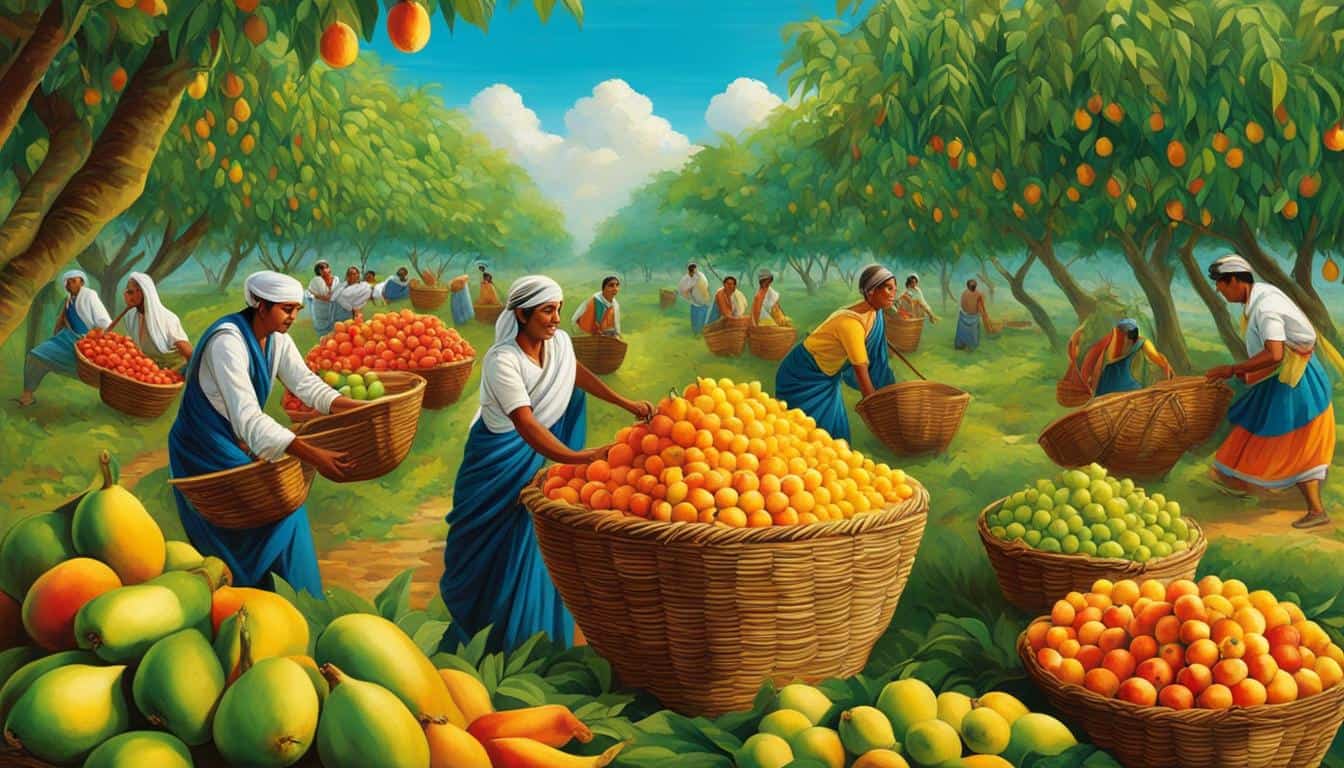
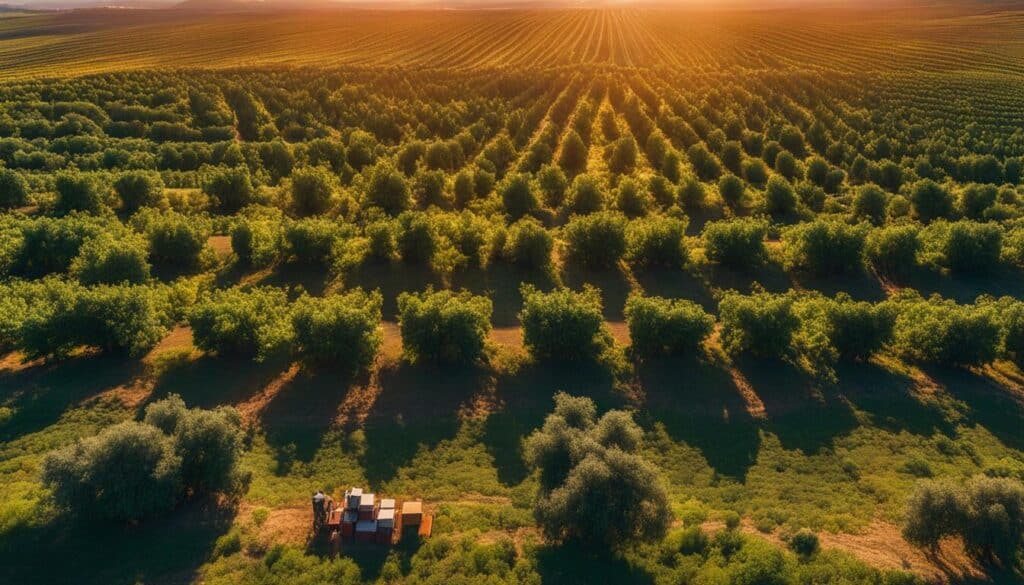
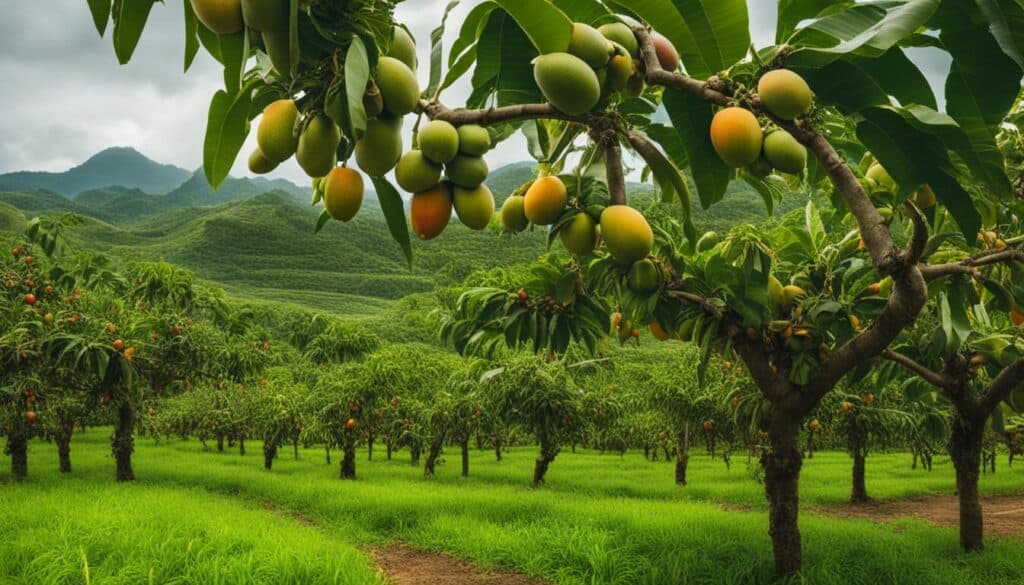
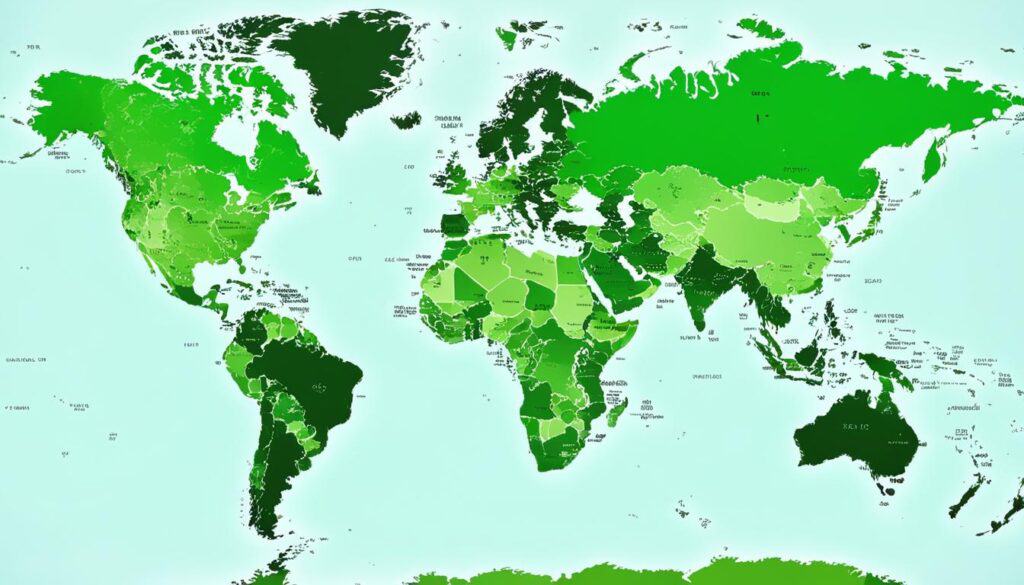

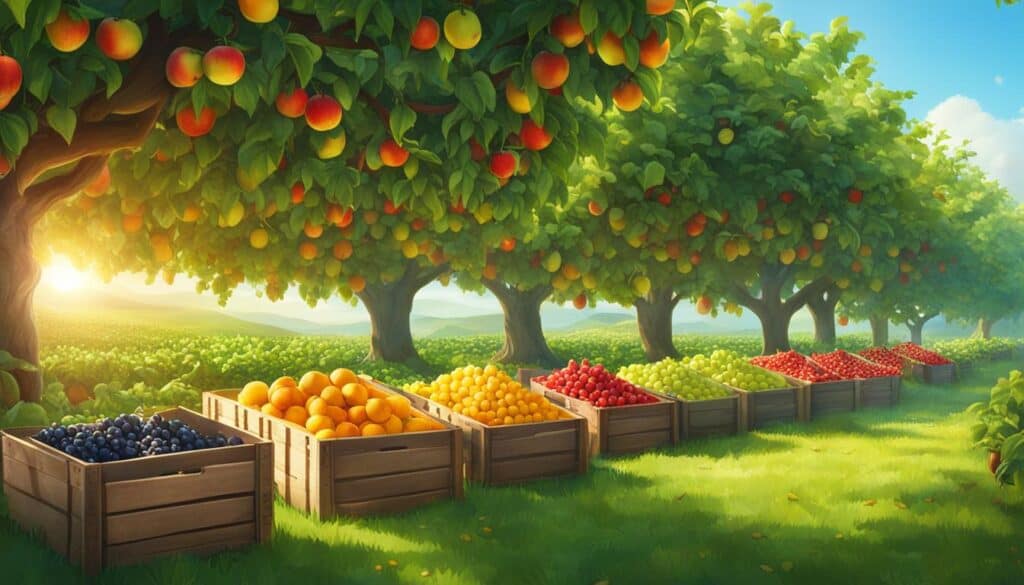



Leave a Reply